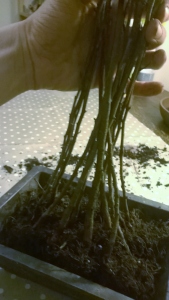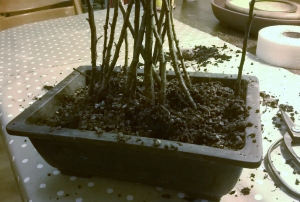I have just been reading the latest scientific report on the development of cells in oak, and it is clear that there is some useful information here for Bonsai.
The research* suggests that trees which have abundant water when laying down earlywood (formed during the springtime flushing) causes the trees to create larger vessel diameter in the conductive tissue of the stem. Conversely less available water at this time causes a smaller diameter of vessel to form.
Later in the season the larger vessels need more water to fill them and to allow the natural transpiration process to ‘pull’ water up from the roots to the leaves, if the volume of water is not high enough them the leaves do not receive the water and will suffer scorch in hot sun. Smaller earlywood vessels need less water to active the ‘pump’ and can more efficiently provide water to the leaves, making them more drought tolerant in high summer.
So water less in spring and you will need to water less in summer.
However, the side effect of this is that for a tree in development we want the largest diameter growth on the stem and so can directly effect the annual increment by watering heavily in spring – more wood is created at this time than any other time of year as the late-wood (laid down in summer) is shown not to be effected by climatic conditions but by overall tree health.
Now the research paper was specifically on oak so I will have to find out if the same applies to other species, but it does seem to be a clever evolutionary trick, and I imagine similar mechanisms exist in other species.
Interesting stuff.
* Price (2015) Shake in Oak: an evidence review; Forestry Commission Research report













